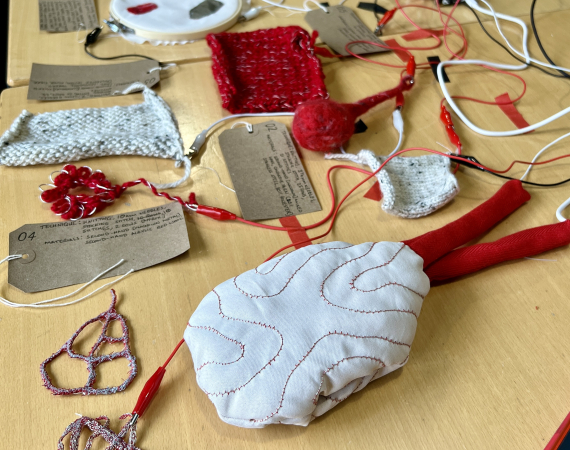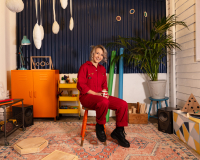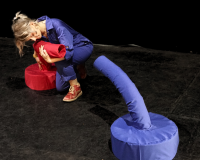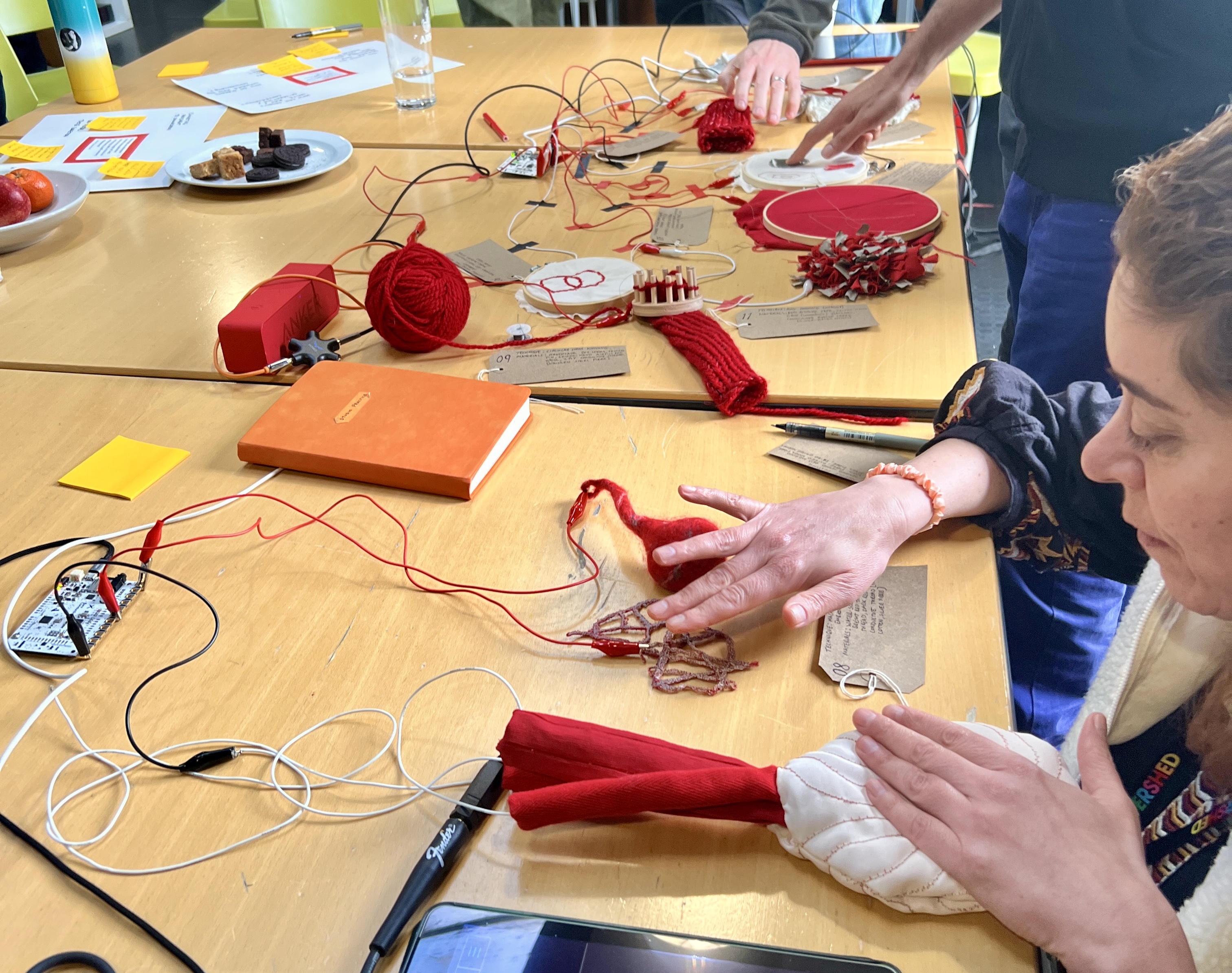Posted on Sat 12 Apr 2025
Meeting Points: Work in progress sharing
What happened when sharing Meeting Points so far with some of the studio community

Posted by

Nat Whitney
Nat Whitney is an audio-visual participatory artist working with creative technologies to construct interactive, sensory objects and spaces that invite curiosity and play. Intrigued by social interaction and the interplay between chance and control, their practice delves into how physical computing…Project

Meeting Points: exploring playful futuristic communication systems through tactile multi-sensory beings
Meeting points is an inquiry into how approaches to connecting with ourselves, our surroundings and each other are evolving in the digital age.When you have the opportunity to speak aloud the ideas that have whirled around in your head for so long, it is always an extremely welcomed but daunting experience. I think these two feelings are intensified when the room you are sharing these ideas with is made up of creative technologists, artists and a whole range of incredible creative humans. This was the halfway sharing point in the residency.
To start the session I shared the origins of the project (as discussed in my first blog), how I began researching and gaining an overview of the history of communication technologies and my explorations of e-textiles so far alongside a selection of interactive samples. These included knitting, needle felting, sewing, machine free motion embroidery, rug hooking and circular loom knitting, all composed of conductive and non-conductive materials. 
I shared a few of the significant points and questions that had come up during researching with the group. From the beginning of my research into communication devices, a few areas I was particularly interested in were:
- Communication objects design and in particular, what was included for functional purposes and what was for aesthetical purposes? What makes them inviting to someone using them?
- When and how did we shift from mainly public and shared communication objects to privately owned objects?
- When did communication devices become more predominantly screen-based?
One significant point in researching was when I discovered David Rose’s ‘Enchanted Objects’, a book exploring how we live with technology, written from a place of being disappointed that so many objects fail to enchant us. I really connected with how they spoke about the relationship between human desire and everyday technology and their referencing of the abundance of creative inventions in commonly known fairytales. Although, I don’t particularly think of my practice to link to the narratives of fairytales, I strongly connected their thinking with my use of what I call ‘familiar anchor points’: including materials, rituals or sounds that a participant is likely to already be familiar with before entering a space, with the aim of connecting with and making the participant feel at ease within the space you are creating.
A question David Rose posed that has really stuck with me is ‘'Do we want to interact with our technologies as smart tools or as caring agents?'. This idea had appeared earlier in my research, when exploring the launch of different video call platforms. Two of the core video call platforms differed significantly in how they presented their offer. One prided themselves on their efficiency and offer of greater productivity at work, whilst another presented images of care and offered greater connection to loved ones.
From these starting points the conversation grew and shifted. Questions that arose included:
-
What makes something feel alive?
- What do we mean by communication vs interaction?
- What are the personalities and agendas of the beings?
- Is it important for them to be recognised as communicators as opposed to musical instruments?

I was really grateful to be in a supportive space for the work to be challenged and inspired during such an early stage of development with an audience of creatives and technologists. Having a selection of the initial physical outcomes of the project present alongside conversation, was really valuable and felt important to me. I feel that I really start to connect with and link together the core concepts of the work once I begin physically making and having tactile objects present, even in an early stage of project development, really helps me to articulate the work.
The conversations during this work in progress sharing opened up many new and exciting lines of enquiry. However, as I learn so much from objects and spaces I create being interacted with by people, I decided to try my best to store many of these new thoughts for version two of the work and focus on having version one ready in a playable form for the final residency sharing. I am already imagining, however, how haptic technology will support version 2 to feel more accessible and alive.